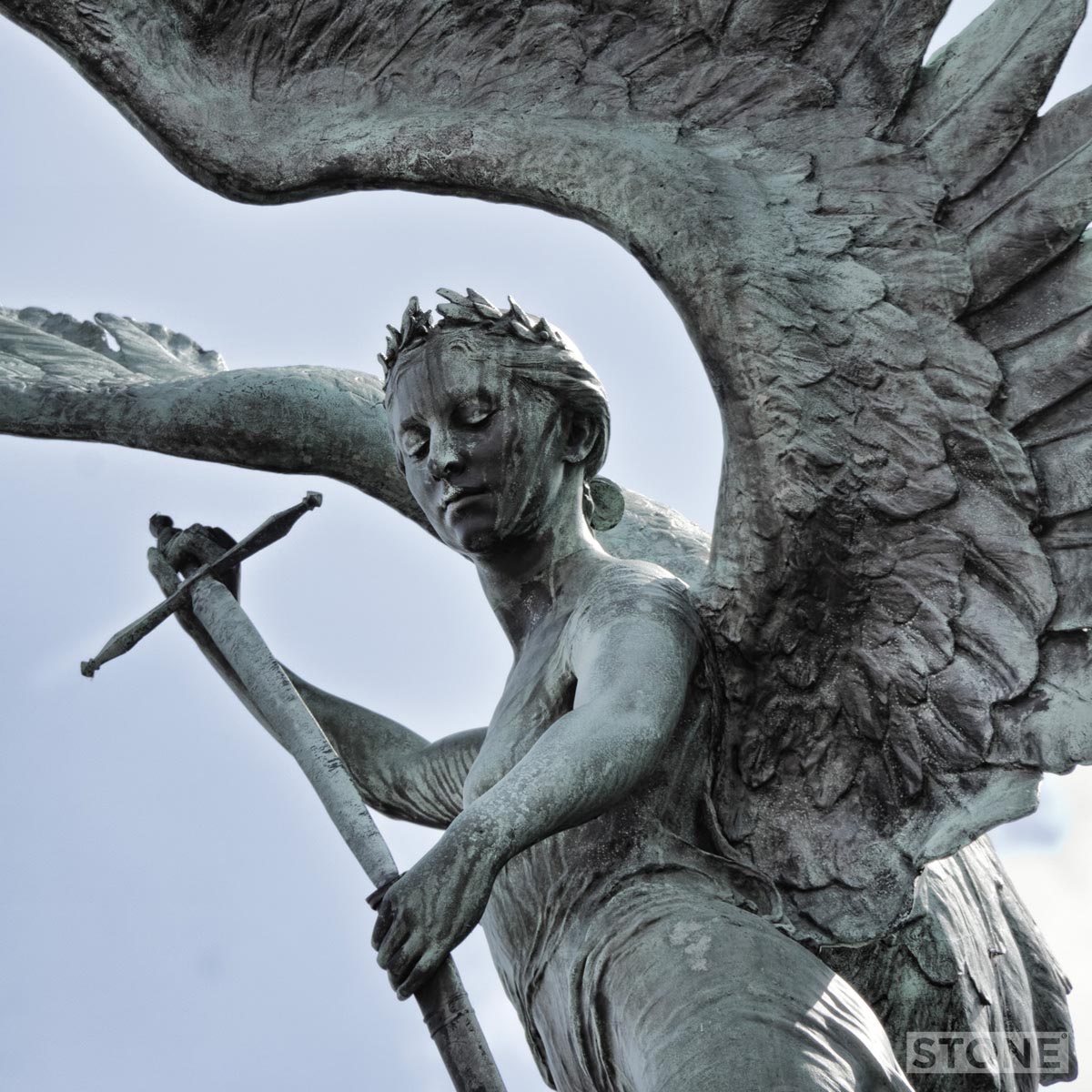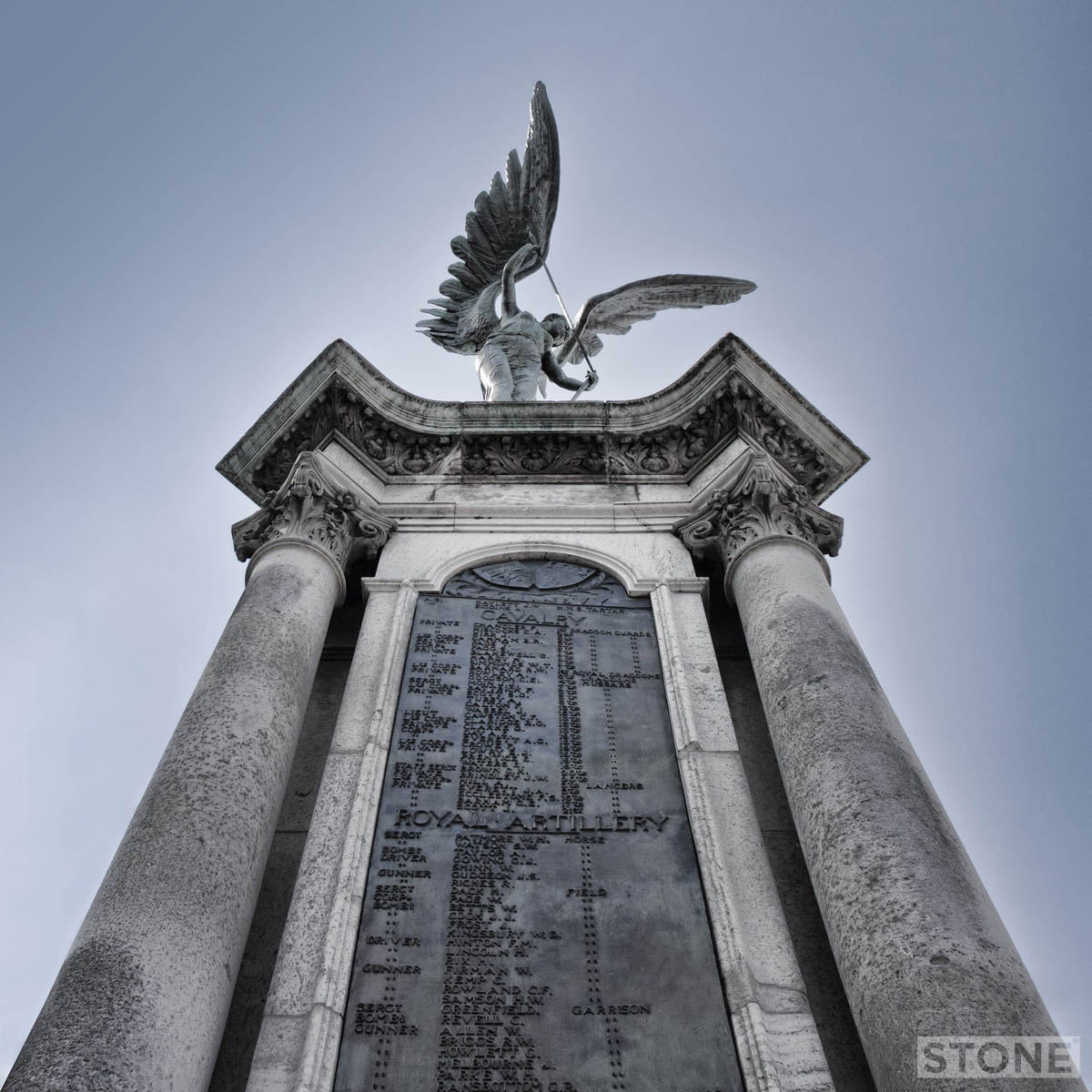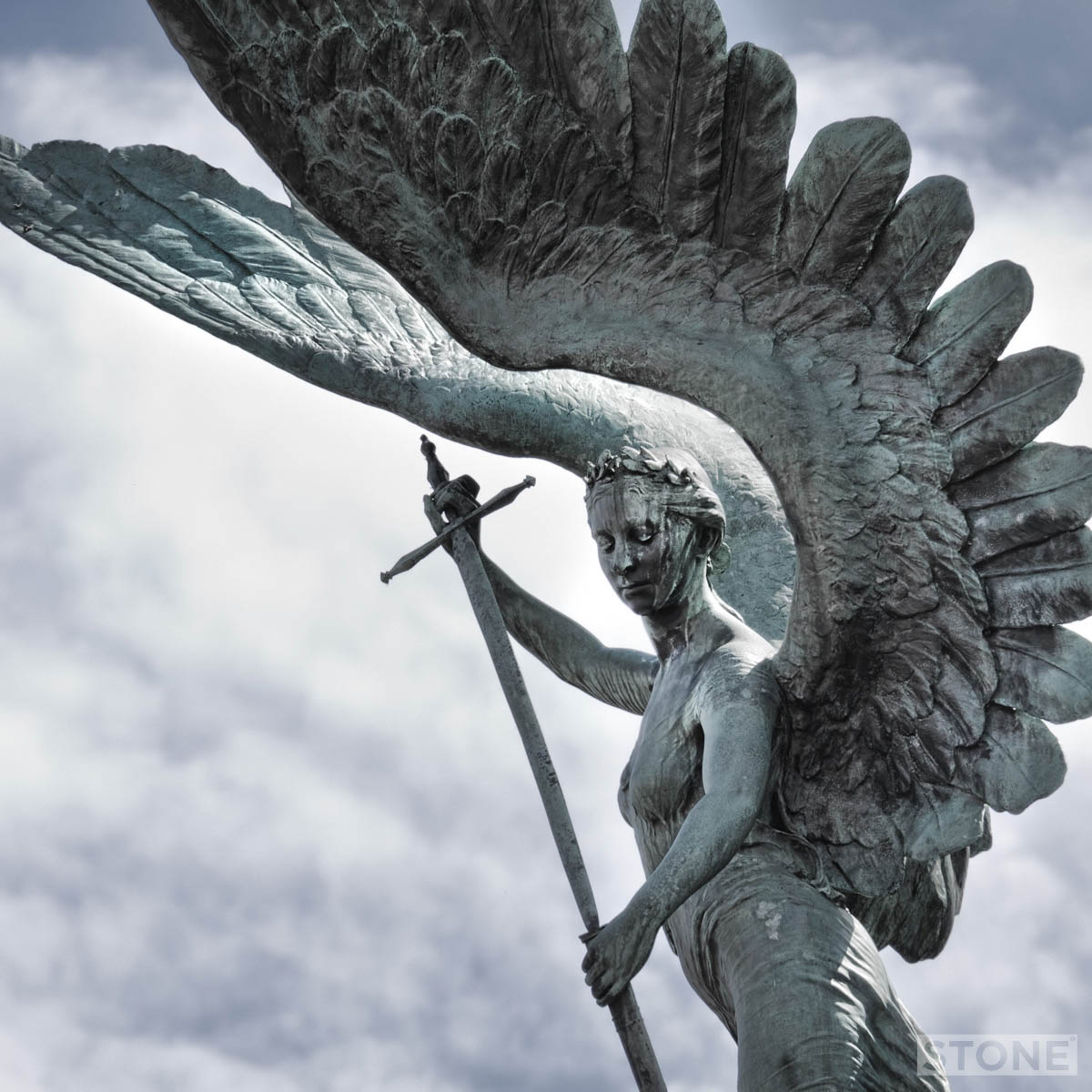‘Peace’ or an Angel Sheathing a Sword, not actually a winged victory at all, despite the smile. A rather attractive woman, but you wouldn’t especially want to piss her off. If you lived at the top of Prince of Wales Road you might fancy having a sword at hand, dealing with the half-naked, drunk and freezen callow youth of Norfolk every weekend lurching about preening and vomiting on your plinth.
This is Norfolk Regiment Boer War Memorial in Norwich; she sits on Agricultural Hall Plain on a plinth just behind the Castle and Anglia TV. Increasing car use has meant she’s become in the words of Malcolm Owen a “traffic island castaway”, isolated from all but clearly visible if you use the technique of looking up from your smartphone for a second, or equally if you happen to be sitting on the top deck of a bus. Part of the reason I posted this against the grain of the current Magdalen Street posts is she’s just been cloaked in scaffold and plastic while being cleaned and the base mended where some of the brass plates had slipped over the last one hundred plus years and they’ve just taken the covers off, I was a bit perturbed by the lack of verdigris, which I liked, but the whole thing looks a bit better as a result.
This piece dates from Pre-1918, you could just about get away with a vaguely smirking rather self-satisfied looking angel putting her sword away after the Boer war; the Great War bought great changes in memorial style, a lot of the Great War sculptures are soldiers; there is even on of chaps and their dead comrades in London in Hyde Park by Jagger, this was slightly frowned upon by the establishment even back then; those memorials came after the massacres of The Great War, a different set of feelings were chiselled into them, the osmosis of society’s feeling flowing through the sculptors.
I’m conscious of not denigrating the sacrifice of the Boer War or indeed any death in a conflict on any side, but the Boer War certainly seems a more ‘colonial’ rather than empirical slaughter feel about it. Victory, in the words of Alan Borg, ‘is a recurring image ..dominating local and town memorials, where civic and national pride could mingle and the emphatic statement “We won!” seemed neither equivocal nor inappropriate.’ Victory is in this case replaced by peace through the gesture which she sheathes her sword to mark the end of the bloody conflict in Southern Africa’. The Boer War cost Norfolk over 300 men, 55 dead in the Norfolk regiment alone, only 15 of those through action though, disease being the victor in more cases than the Boers were.

You can I believe see the shift in thinking between how death during war is perceived and used by the establishment between this and something like Jagger’s Artillery Memorial or Blomfield’s Cross of Sacrifice or Toft’s mesmeric soldiers staring into the distance or McKenzie’s smiling returning soldiers. It stops being mythical characters and starts being ponderous men doing things or standing guard in bronze uniforms, Toft in particular captures something, his boy in Cambridge has a German stahlhelm on his back, the spoils of war, he is also responsible for the Boer War memorial in Ipswich which is an entirely different thing to ours, much more like later memorials; a soldier with arms reversed.

It shifts again to an ever more ponderous level after WW2. Now we seem to have a fairly weird national grasp on memorial, where effectively a whole town has become a national memorial to the returned remains of our boys and girls tangled up in some inexplicable and murderously dangerous shenanigans in the Khyber Pass (again). The introduction of the National Memorial Arboretum was a good move remembers all sorts of things in different ways, and isn’t as militaristic as it could be which is how it should be. We remember people. Of particular importance to me is the Shot at Dawn Memorial which includes Norwich boy John Abigail, along with the 305 other recorded boys all murdered, mostly for showing a weakness under extreme circumstances. We are a strange nation when it comes to grief, our outpourings have become something we seem to tie to all sorts of posts, celebrity death has become a strange talismanic carriage for our tears these days, social media rain-showers of sadness. It’s all got a bit strange.
It is a fabulous piece by George Wade anyway, apparently having a near twin in Maritzburg, South Africa dating from 1911. Worth looking up at as she really is a bit special, what with the sword and the wings and everything. I can imagine some mighty smoting going on at some point. And this is the song she listens to on her iGod when she’s finished smoting people and is sheathing that sword.


Fascinating stuff, Nick! There’s a wealth of material about Norfolk on your blog that I wil get round to looking at in due course. Like you, I am interested in hidden histories and, for want of a better term, that which might best be described as pschogeography.
Thanks Laurence, I’ve bookmarked your site and will have a stroll through when time allows, looks like we sing from similar song sheets. I’m a bit nervous about the Pyschogeography tag despite using it for lack of a better one.
One of my favorite Norwich sculptures. Sometimes I’m not sure whether she’s putting the sword away or taking it out…